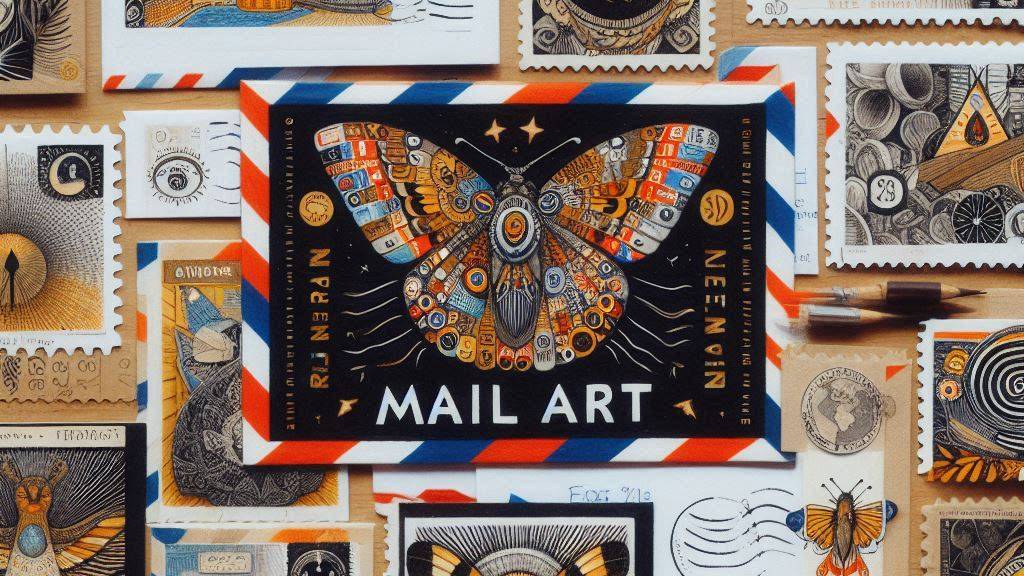Mail Art: A Global Network of Artistic Exchange

September 8, 2024 – Los Angeles: Mail art, a form of artistic expression that utilizes the postal system for distribution and exhibition, emerged in the mid-20th century as a direct response to the formal, institutional nature of the traditional art world. Its origins can be traced back to the Dada and Fluxus movements, which challenged conventional notions of art and the artist’s role.
One of the earliest pioneers of mail art was Ray Johnson, an American artist who founded the New York Correspondence School in the early 1960s. Johnson began exchanging small-scale works through the mail with a network of artists, fostering a sense of community and collaboration. The Correspondence School served as a catalyst for the growth of mail art, inspiring artists around the world to participate in the movement.
The Influence of Dada and Fluxus
Dada, an avant-garde art movement that emerged in Europe during World War I, had a significant impact on the development of mail art. The Dadaist spirit of experimentation and irreverence would later be reflected in the work of mail artists.
Fluxus, another influential avant-garde movement that emerged in the 1960s, also played a crucial role in the development of mail art. Fluxus artists sought to challenge traditional notions of art and the artist’s role, often incorporating everyday objects and actions into their work. Their emphasis on process and participation was a key feature of mail art, which encouraged artists to engage with a wider audience through the postal system.
The Global Reach of Mail Art
Mail art quickly gained momentum and spread to artists around the world. The postal system provided a democratic and accessible platform for artists to share their work, regardless of their location or social status. Artists from diverse backgrounds and cultures participated in the movement, creating a global network of artistic exchange.
One of the most notable mail art networks was the Artists Stamp Collecting Society (ASCS), founded in the 1960s by British artist John Thomson. The ASCS encouraged artists to create and exchange stamps and envelopes, expanding the scope of mail art to include ephemera and collectibles.
The Evolution of Mail Art
Over the years, mail art has evolved to encompass a wide range of artistic practices. Artists have experimented with various materials and techniques, from traditional postcards and envelopes to more elaborate three-dimensional objects and installations. Some mail art projects have involved large-scale collaborations, with artists from multiple countries working together to create collective works.
Mail art has also played a significant role in social and political movements. Artists have used the postal system to disseminate information, raise awareness about important issues, and challenge authority. For example, during the Cold War, mail art was used to connect artists behind the Iron Curtain with those in the West, fostering a sense of solidarity and resistance.
The Impact of Digital Technology
The advent of digital technology has had a profound impact on mail art. While the postal system remains an essential component of the movement, artists have also embraced online platforms to connect with others and share their work. Email, social media, and online galleries have provided new opportunities for artists to participate in mail art projects and reach a wider audience.
Despite the challenges posed by digital technology, mail art continues to thrive as a unique and innovative form of artistic expression. Its commitment to democratic values, its emphasis on community and collaboration, and its ability to connect artists from around the world make it a vital part of the contemporary art landscape.
Artists For A Better World International
AFABW Int has hosted mail art projects for about a quarter of a century, often in support of World Art Day, with the original one in support of the 9/11 first responders: Operation Help. The group has a purpose to raise the awareness of worldwide artists about using their creative powers to benefit mankind by leading the way to a better world.
